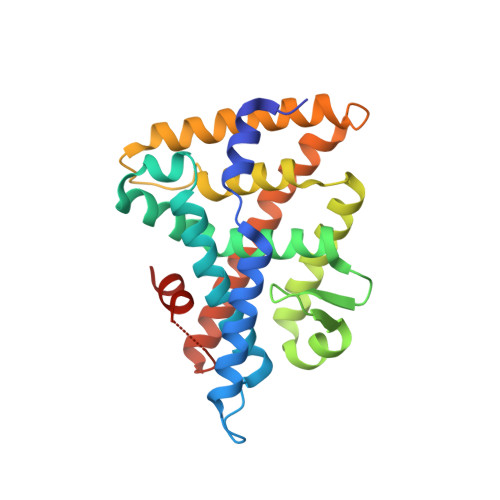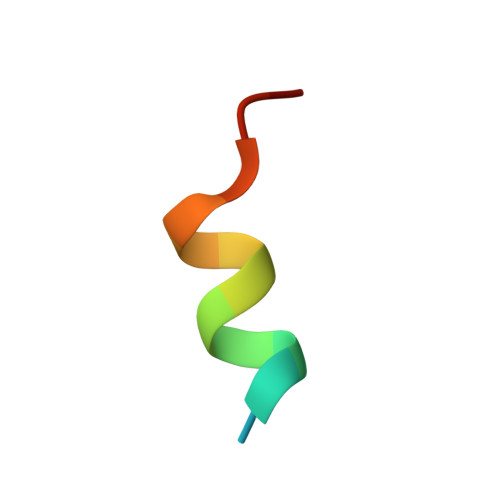Enantiomer-specific activities of an LRH-1 and SF-1 dual agonist.
Mays, S.G., Stec, J., Liu, X., D'Agostino, E.H., Whitby, R.J., Ortlund, E.A.(2020) Sci Rep 10: 22279-22279
- PubMed: 33335203
- DOI: https://doi.org/10.1038/s41598-020-79251-9
- Primary Citation of Related Structures:
6VC2 - PubMed Abstract:
Chirality is an important consideration in drug development: it can influence recognition of the intended target, pharmacokinetics, and off-target effects. Here, we investigate how chirality affects the activity and mechanism of action of RJW100, a racemic agonist of the nuclear receptors liver receptor homolog-1 (LRH-1) and steroidogenic factor-1 (SF-1). LRH-1 and SF-1 modulators are highly sought as treatments for metabolic and neoplastic diseases, and RJW100 has one of the few scaffolds shown to activate them. However, enantiomer-specific effects on receptor activation are poorly understood. We show that the enantiomers have similar binding affinities, but RR-RJW100 stabilizes both receptors and is 46% more active than SS-RJW100 in LRH-1 luciferase reporter assays. We present an LRH-1 crystal structure that illuminates striking mechanistic differences: SS-RJW100 adopts multiple configurations in the pocket and fails to make an interaction critical for activation by RR-RJW100. In molecular dynamics simulations, SS-RJW100 attenuates intramolecular signalling important for coregulator recruitment, consistent with previous observations that it weakly recruits coregulators in vitro. These studies provide a rationale for pursuing enantiomerically pure RJW100 derivatives: they establish RR-RJW100 as the stronger LRH-1 agonist and identify a potential for optimizing the SS-RJW100 scaffold for antagonist design.
- Department of Biochemistry, Emory University, Atlanta, GA, 30322, USA.
Organizational Affiliation:

















